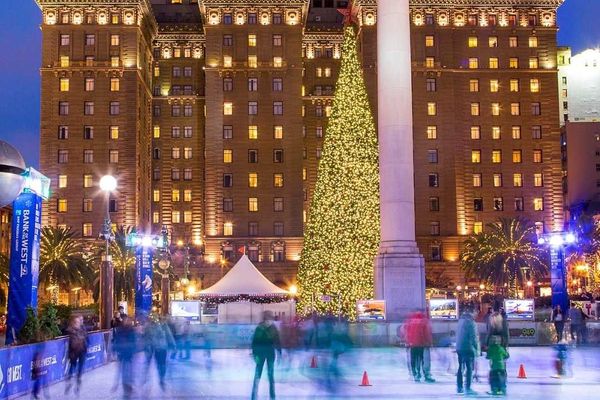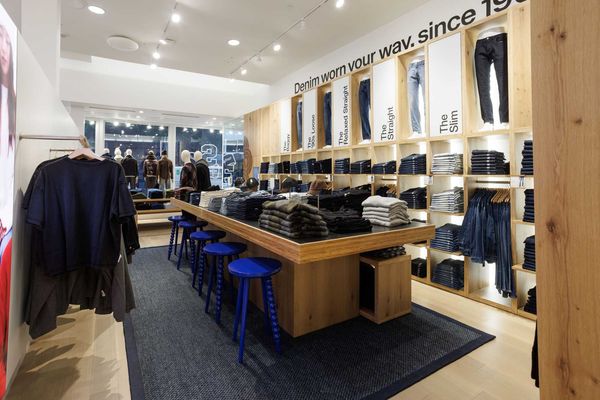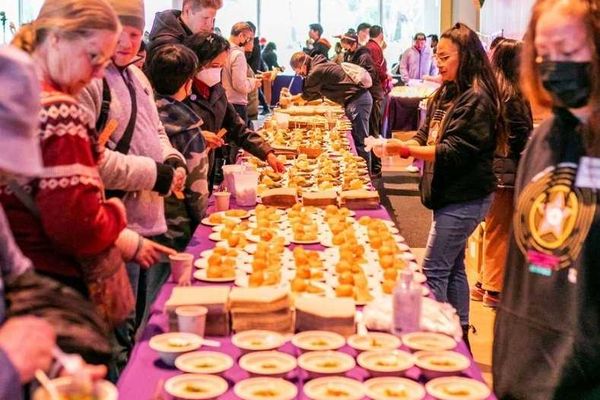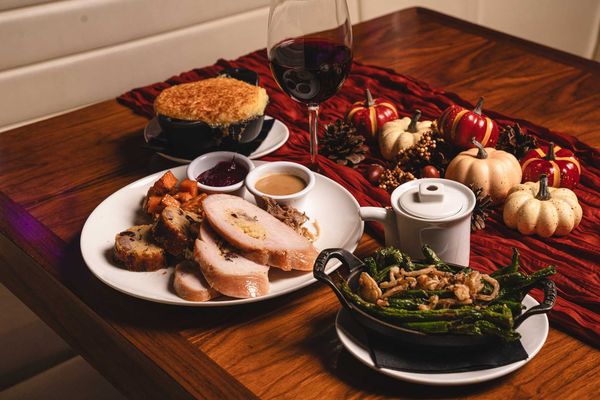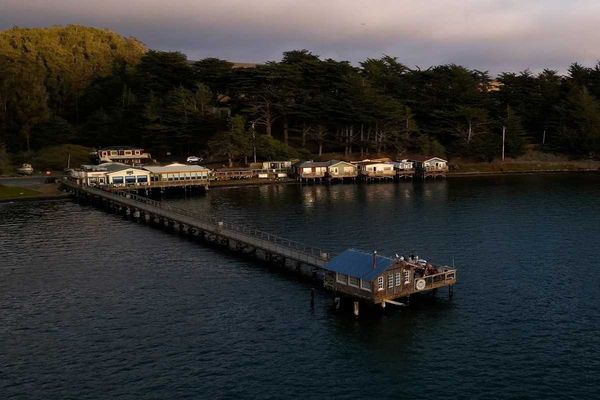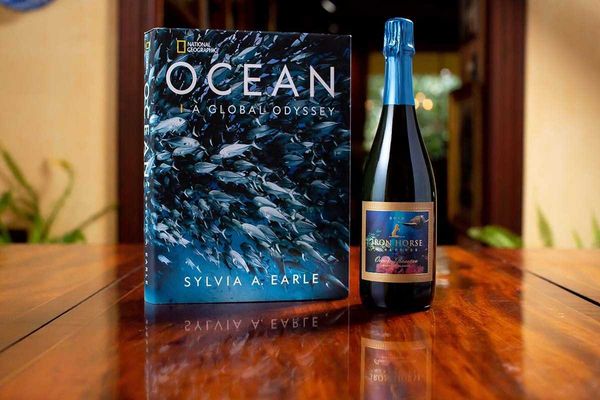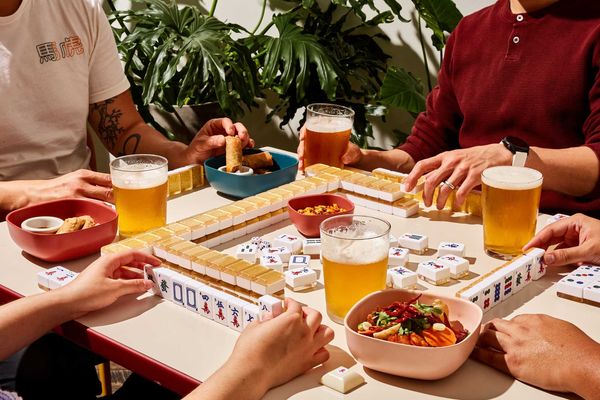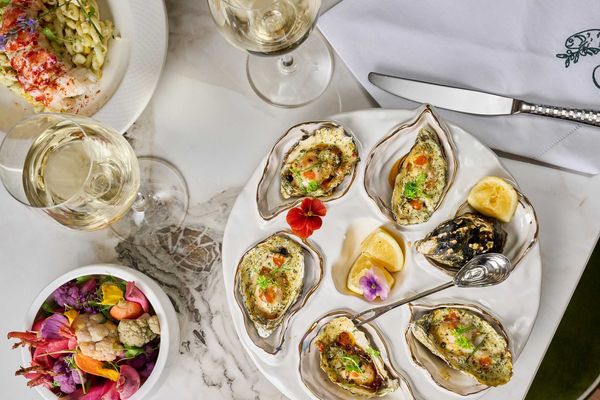This Women’s History Month, 7x7 is taking a moment to remember the mothers, daughters, aunties and sisters who, thanks to their ambition, skill and generosity, have become synonymous with the San Francisco landscape.
From the spectacular Legion of Honor built in 1924 by the “great grandmother of San Francisco” Alma de Bretteville Spreckels, to the clanking, clanging streetcars on which Maya Angelou conducted riders from bay to ocean in 1943, here are six (of many) women who have left their mark on the city, and the places that evoke their names.
Lotta Crabtree + Lotta's Fountain
The oldest still-standing monument in the city dominates an unassuming pedestrian island at the downtown intersection of Geary, Market, and Kearny. Painted bronze and adorned with mythical creatures, the 24-foot Lotta’s Fountain was entertainer Charlotte Mignon "Lotta" Crabtree’s satisfying f-u to the city that raised her then drove her out for her bohemian ways.
Crabtree was brought to San Francisco in 1853 at the age of six, one of the few white children in the city at that time. The charismatic girl attracted attention and, at the age of eight, began dancing for Gold Rush miners and ruffians. Over time, Crabtree (along with her mother and an Italian “friend”) played at so many saloons, gambling houses, and dives around Northern California that she eventually rose to prominence as the state’s most lauded entertainer of the era, making a pretty penny in the process. Returning triumphantly to San Francisco as a star, Crabtree commissioned Lotta’s Fountain in 1875 from her $4 million dollar estate.
Ironically, the monument built by the woman that was driven from the city’s streets became an important symbol of SFs longevity and resilience in later years. Immediately following the 1906 earthquake, it served as a meeting place for loved ones separated in the chaos, and a number of famous entertainers have performed in front of it, including famed opera singer Madame Tetrazzini. // Kearny @ Geary (Union Square)
Lillie Hitchcock Coit + Coit Tower
Firefighter firebrand Lillie Hitchcock Coit forever changed the San Francisco skyline. An eccentric all her life, Coit bucked the dowdy standards governing women’s bodies and minds in the mid- to late-19th century. In addition to regularly smoking cigars, wearing trousers, and gambling at male-only establishments in North Beach, the wealthy socialite was made an honorary member of Knickerbocker Engine Co. in 1863 at the age of 20.
Coit maintained a lifelong relationship with the city’s firefighters, visiting them on their sickbeds and attending their funerals, but her greatest recognition of their work came after her death in 1929. Coit dedicated a third of her significant estate to the construction of a firefighter monument at the northwest corner of Washington Square Park and honored the city they protected with the building of Coit Tower on Telegraph Hill. Despite rumors to the contrary, the tower was not intentionally built to resemble a fire hose nozzle—but it’s all the more fitting that it does.
Learn more about Lillie Hitchcock Coit at Coit Tower, daily from 9:30am to 6pm. // 1 Telegraph Hill (North Beach), sfrecpark.org
Alma de Bretteville Spreckels + Legion of Honor
“The great grandmother of San Francisco” came from humble beginnings as the daughter of Danish immigrants to the Sunset District. But Alma de Bretteville’s beauty unlocked the door to a more opulent world. Following her marriage to sugar magnate Adolph Spreckels in 1908, Alma began to rub elbows with artistic and literary figures including Jack London and Auguste Rodin. She was particularly taken by the latter and purchased a number of his sculptures, displaying them at the French Pavilion at the Panama-Pacific International Exposition in 1915.
De Bretteville Spreckels was so enamored with the temporary pavilion that she embarked on a quest to have it perfectly replicated in permanent form for the display, in part, of her burgeoning art collection. With husband Adolph’s fortune, she successfully completed the project in 1924, calling the museum the Legion of Honor.
Although the institution was not her only major cultural undertaking—de Bretteville Spreckels also funded the construction of the San Francisco Maritime Museum and the Maryhill Museum of Art in Washington State —the stunning museum in the fog-drenched outskirts of the Presidio remains her most important legacy. // 100 34th Ave (Outer Richmond), legionofhonor.famsf.org
Maya Angelou + SF Streetcars
Before she became a world-renowned poet, author and civil rights activist, Maya Angelou was a teenage streetcar conductor, the first Black woman to fill the role in San Francisco. Just 15 and on a semester off from high school in war-tinted 1943, Angelou attempted to apply for a job with the Market Street Railway. Though they refused at first, plucky Angelou returned every day for two weeks until they finally accepted her application, in which she passed herself off as a work-eligible 19-year-old.
Angelou worked several lines during her five-months on the job, likely including the 7-Haight and 5-McAllister lines, and wrote about her position in her magnum opus I Know Why the Caged Bird Sings. While the era’s Jewett Cars were eventually replaced by buses, streetcar service resumed along the Embarcadero and Market Street in 1981. Those vintage trolleys still run today.
Learn more about the city’s historic streetcar system at the San Francisco Railway Museum, located just a block from the clinking, clanging behemoths running down the Embarcadero. // 77 Steuart St (Embarcadero), streetcar.orgWorking Women + Rosie the Riveter WWII Home Front National Historic Park
When 10 million men were called to the World War II battlefield, they left the United States in the capable hands of women. By 1945, millions of women from all walks of life had been recruited into the workforce, called to the task by propaganda sporting the image of Rosie the Riveter, a white woman dressed in denim coveralls and a red polka-dot bandana, with the slogan “We can do it!”
Richmond and its port across the bay from San Francisco was one of the centers of industry for the women-staffed war effort. There, they built war ships—747 to be exact, one of the most productive shipyards in history—and worked in 55 other industries as electricians, carpenters, welders, and journeymen. Their en masse migration to Richmond had far reaching impacts not only by reshaping the region’s cultural landscape, but by kickstarting the women’s and civil rights movements of the mid-20th century.
Learn more about the integral role women played in World War II and visit the SS Red Oak Victory, the last remaining ship built in that era, at the Rosie the Riveter WWII Home Front National Historic Park. National Rosie the Riveter Day is March 21st. // 1414 Harbour Way S (Richmond), nps.gov/roriAmy Tan + Chinatown
Amy Tan didn’t play a role in the establishment of the largest Chinatown outside of Asia but she did help to bring new recognition to the enclave with her bestselling book, The Joy Luck Club. The Joy Luck Club revolves around Waverly Place, the colorful, enigmatic street still considered the soul of San Francisco's Chinatown (one of the characters is even named for the street), deftly revealing the lives of the Chinese and Chinese-American women who have long woven the neighborhood’s social, cultural, and historical tapestry.
The Joy Luck Club so successfully acted as a bridge for cultural understanding by providing intimate insight into a community that had long faced discrimination, it was selected as a 1989 finalist for the National Book Award and adapted into a movie in 1993. In 2020, Tan’s masterpiece was selected for preservation in the U.S. National Film Registry for its cultural significance. // Waverly Place, between Washington + Sacramento, (Chinatown)




